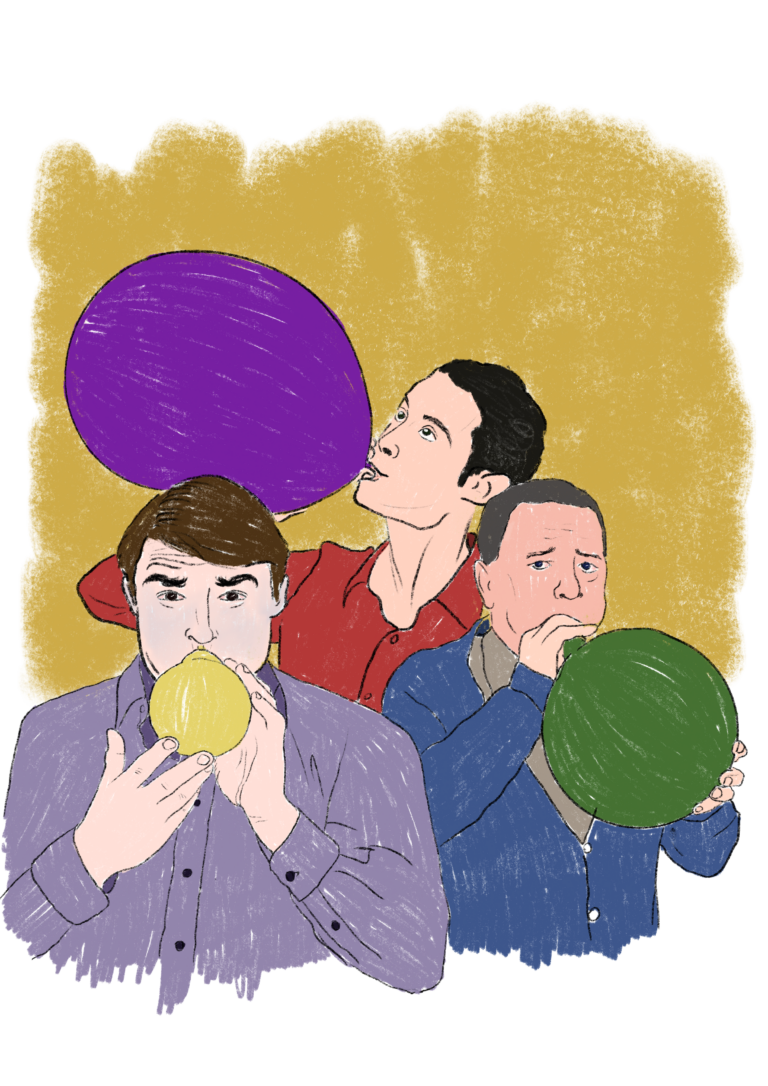
“Did you see the size of that balloon? I’m definitely going to sign up for music school.”
Episode 10 - One Rule - The Armenian Duduk (ft. Gayane Nersisyan)
Short Summary
In this episode of Danetkas – Music Stories, the host presents the Danetka “One Rule”, where a musician amazes partygoers with circular breathing, a skill learned from playing the Armenian duduk, inspiring everyone to join music school. The guest Gayane Nersisyan, co-creator of Danetkas, shares the cultural significance of the duduk, an ancient wind instrument with a melancholic tone, often played at funerals and recognized as a UNESCO cultural heritage. They discuss its history, the challenges of mastering it, and its role in films like Gladiator. The episode closes with a recording by renowned duduk player Djivan Gasparyan, showcasing its haunting beauty.
Francisco:
Hello and welcome to the Danetka’s Music Stories podcast. In this podcast we will have a very special guest, the musician Gayane Nersisyan, also one of the co-creators of Danetkas. I will introduce her later in the episode and ask her some questions about today’s Danetka.
We will play the Danetka called “One Rule”. The Danetka goes as follows: Are you ready?
One rule.
Did you see the size of that balloon? I’m definitely going to sign up for music school.
In the picture, we see three balloons of three different sizes and colors. One of them is very big, while the other two are smaller. The three balloons are up in the air.
How can a balloon make someone decide to go into music school? Here are now the four rigolettos, four hints to help you know what might have happened. First rigoletto says: “three, two, one, go.”
It sounds like a kind of race or competition or something where they all have to start at the same time.
Second rigoletto: “Do it in one go.” What has to be done in one go?
Third rigoletto, everyone has hidden talents. So someone here in this story has a hidden talent, maybe a musical one? What kind of musical talent can help you win a competition where people start at the same time?
Fourth and last rigoletto: “You don’t need words to convince people to learn music. You don’t even need music to convince people to learn music.” So apparently, there wasn’t even music being performed, but apparently people were convinced to learn music, even though there was no music playing.
Do you have any theories of what might have happened? I will now read the answer:
During a party, Solomon, Sipan and Minas were playing a game of filling balloons.
The rule was that they could take only one breath while filling the balloons. They blew as long as they could. In the end, they compared the sizes.
The biggest balloon would win. The musician won. Nobody knew about his secret skill. Because he played duduk, an Armenian wind instrument, he knew how to blow with his mouth and inhale at the same time with his nose. This technique is called circular breathing. As a result, everybody was so impressed that they wanted to go to music school.
Did you know it was possible to blow air with your mouth and inhale at the same time? Have you tried to do it? You can try it now.
No worries if you cannot. It’s a very hard skill that takes years to master. And now, without further ado, we have our special guest, Gayane Nersisyan.
So, hello, Gayane.
Gayane (G):
Hello, Francisco.
Francisco (F):
Gayane is a co-creator of Danetkas.
And we decided together to create a Danetka about our own country. So, I made a Danetka about Portugal, which is still not revealed in this podcast. And you made one about Armenia, because you’re from Armenia.
So, what can you tell us about Armenia, Gay, before we go into the Danetka?
G: Armenia is a country, a small one, but a very proud one in Southern Caucasus. We have a very long history, a very old history.
F: When was the first time that you actually listened to a duduk, Gay?
G: I don’t remember when I heard duduk the first time.
F: But do you think, for example, your parents heard it many times during their lifetime?
G: I don’t think so, because duduk is normally an instrument that you play on funerals, mostly. So, unless you are on a funeral and there is some melody playing in it, normally you don’t hear duduk. Or maybe some kind of a concert of some folk music or something, that there is duduk. Or you are in a concert of a musical school or something, and your kid plays duduk, then you hear duduk.
F: So, you learn duduk in the music school?
G: You can, if you want.
F: And do the kids start really early with the duduk, or do you usually start with a more conventional instrument?
G: I don’t think that you can start too early, like at 5 or 6. I don’t think that you can start then, because it’s still like a wind instrument and you need to be able to blow. And it’s not that easy, it needs a lot of air and a lot of energy.
So, when you are too small, I don’t think you can manage to do that. But I think like 8 or 9 years old, I think it’s possible. There are some kids who play.
F: Do you think kids also start with the flute, like in Europe? Because many countries in Europe, the first wind instrument that they learn is the flute.
G: It’s not at all the same technique, it’s not at all the same. I mean, you still blow, but I don’t think that it’s the same technique in all the ways. Like the mouth, the blowing, how you use your body and everything. It’s so different that I don’t think that it will be much of use.
F: Okay, okay. And have you been in a funeral where duduk music was played?
G: Yes, I have. It is pretty common to have that during the ceremony. And not in the church, but like literally during the burial ceremony, it’s very common to have just some duduk playing, just like as a background. Normally, what you hear is two duduks at the same time. One that is keeping the, as we call it, the dum, it’s just the note that they keep without stopping, just non-stop note playing, like “hmmm”… humming. And the other one that is doing the melody at the same time. So normally there are two duduks that you can hear, and normally it’s some recording or something.
F: And the one that plays like the low note, that player then has to have the circular breathing technique.
G: Yes, exactly, because the dum shouldn’t stop. They have to play without and just like humming endless. And if they breathe, it will stop. So that’s why there is the technique of circular breathing.
F: You mentioned that they are played like in funerals. I would assume because it has a very sad and emotional sound. But do you play it in a more happy occasion, maybe?
G: Normally not. Personally, I haven’t ever heard duduk in a really happy occasion. I know that there is some music played by duduk for some films. And so we have written in the history of Danetkas. In the Gladiator, I know that this one is the most famous. And there are some other movies also that they use duduk. But it’s also for some kind of dramatic and just sad music, just for the mood. Normally, you cannot really do something very happy with duduk. At least I haven’t ever heard any.
F: And do you know like any famous duduk player that is maybe like a virtuoso in the instrument or something?
G: Yes, we have actually the guy that plays in the Gladiator. He is the most famous one. His name is Djivan Gasparyan, and he’s an Armenian player. And he’s really famous. And I know that his grandson also plays duduk. So that’s one of the kids that I know as a duduk player. He was like eight or nine that I heard him play for the first time.
F: You heard his grandson play in Armenia?
G: Yes, yes, I did.
F: Oh, that’s very interesting. And do you think it’s more common to play it like in villages or more in the city?
G: I don’t think it has any difference. It’s not that kind of instrument that you need to be in a village to play. It’s really about just about the mood, because it makes such a sad melody and such a sad mood.
It doesn’t matter if you are in a village or in a city. Unless you need that mood, you don’t really play duduk. I know that there are like beautiful melodies that don’t really need to be very sad that they play with duduk.
But it’s just more common for duduk to be played during the funerals.
F: OK, that’s that’s very interesting. Is there something else you would like to show with our listeners, maybe about the duduk or about Armenia that our listeners should know?
G: Well, as I said in the beginning, we are a small country, but a very proud one and a very old one. And duduk is one of the proofs of that, because it’s almost more than 1500 years old, even older. There are some archaeological finds that are like people find some traces of duduk that are even older than that.
And I know that duduk is known as a cultural heritage of UNESCO. It’s been like 20 years almost. So, yeah, we’re old and proud.
F: OK, that’s all. That sounds amazing. We will listen to a recording of Ivan Gasparyan.
And thank you so much for your contribution and for creating many danakas with me.
G: Thank you. Thank you too for that. And enjoy the music.
